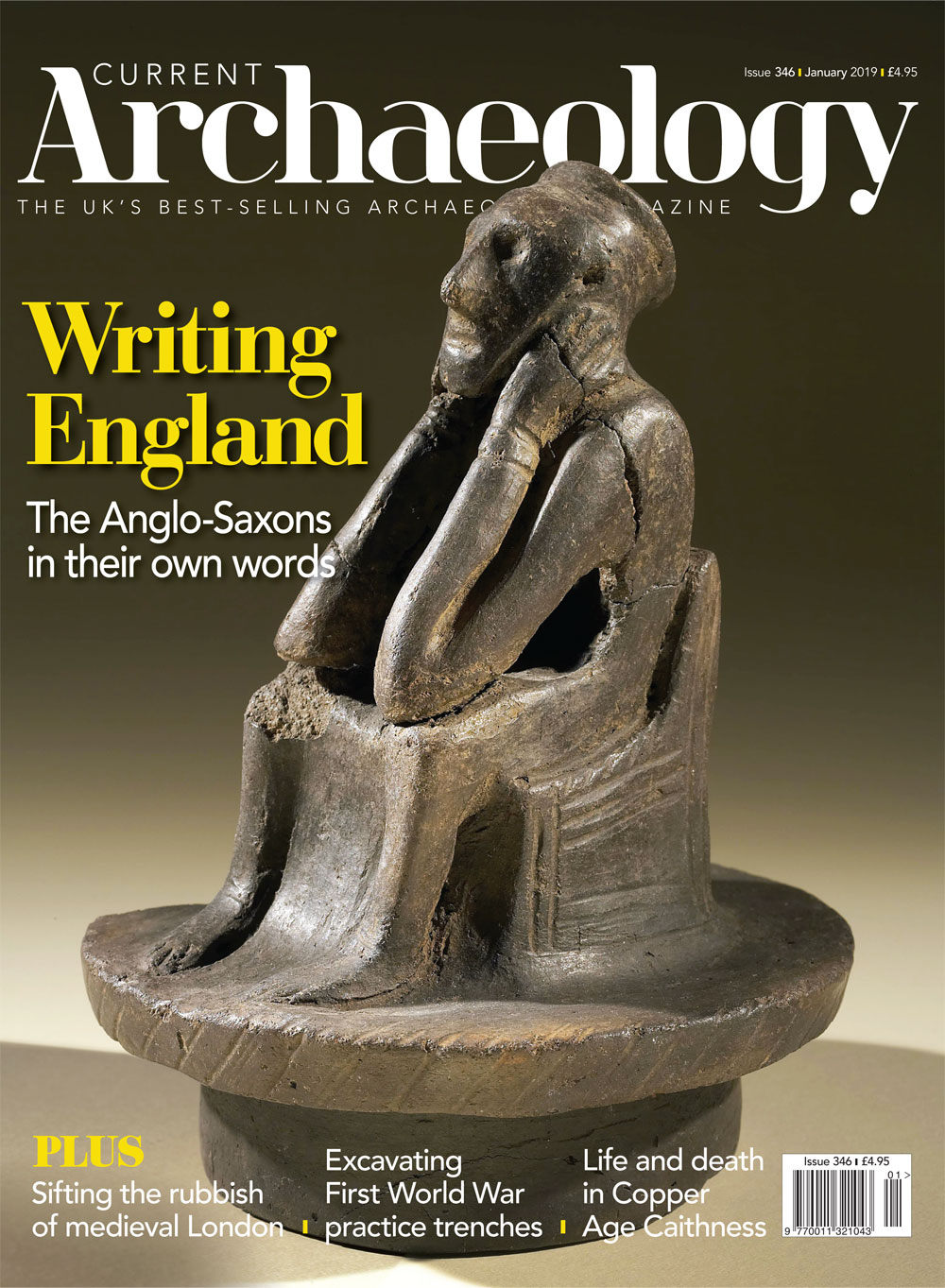Between the end of the Roman occupation of Britain and the Norman Conquest, England changed beyond recognition. Rival Anglo-Saxon kingdoms vied for primacy, but also produced objects of astonishing artistry including, after Christianity returned to these shores, ostentatiously ornate manuscripts. Our cover story traces the evolution of England through these written and material clues.
If gospel books, charters, and elite artefacts can yield invaluable information, so too can the detritus of everyday life. A long-running research project has been sifting the Thames-side rubbish dumped by generations of medieval Londoners.
Very little in the way of refuse was, however, found during excavations at Barry Buddon – as befits a military site. There, archaeologists and veteran volunteers from Operation Nightingale have been exploring First World War-era practice trenches.
From the wider landscape of warfare, we next turn to a much more personal story. The remains of a young woman who lived and died in Caithness over 4,000 years ago were first discovered around three decades back, but no formal report was ever published. What can modern science reveal about this individual?
‘Individual’ was certainly a word to be applied to the late Jean Manco. Despite having no formal genetics training, her books raised important questions about this field. The last of these concerned the Anglo-Saxons – we explore the evolution of Anglo-Saxon archaeology, and Jean’s place in this landscape.
Finally: voting is now open for the CA Awards! Go hereto find out how to have your say, and here for preliminary details of the timetable for our annual conference.
Carly Hilts
/n
IN THIS ISSUE:/n
FEATURES/n
A LOAD OF OLD RUBBISH?/n
Sifting the remains of London’s medieval waterfront
Excavations along the Thames waterfront in 1974-1984 uncovered mountains of medieval rubbish. It took decades to work through it, but the results have revealed a detailed picture of life in London during this period.
‘TRENCH WORLD’/n
Excavating the First World War at Barry Buddon
Barry Buddon has been used for military exercises for close to 170 years. Now modern veterans and professional archaeologists have investigated a series of First World War training trenches on the site.
WRITING EARLY MEDIEVAL ENGLAND/n
Tracing the first echoes of Anglo-Saxon voices
Strikingly few written sources survive from the dawn ofthe Anglo-Saxon period – yet in subsequent centuries early medieval England would see a flourishing literary culture. What can the material record tell us about the development of these first kingdoms, and the evolution of England itself?
INVESTIGATING AVA/n
An encounter with a woman from Copper Age Caithness
The remains of a Beaker-period woman were discovered in the Scottish Highlands in the 1980s, but little was published at the time. What can modern science reveal about her life and death over 4,000 years ago?
JEAN AND GENETICS/n
Commemorating Jean Manco’s place in the Anglo-Saxon world
Despite no formal genetics training, the late Jean Manco dived into the world of ancient DNA, tackling some of the biggest questions regarding European migration and ancestry. In her latest – and, sadly, last – book, she considered the origins of the Anglo-Saxons.
NEWS/n
Rethinking Pictish symbols; Dental health and poverty during the Great Irish Famine; Roman fort settlement revealed in Cumbria; Vicus discovered in Devon?; Lamprey for dinner in medieval London; Science notes; Digging Bronze Age Drumnadrochit; Finds tray
REGULARS/n
Comment
Joe Flatman excavates theCAarchive
Context
Mapping wartime wrecks: Sandown Bay, Isle of Wight
Reviews
London’s Waterfront 1100-1666: excavationsin Thames Street, London, 1974-84;The RomanPottery Manufacturing Site in Highgate Wood:excavations 1966-78; Life on the Edge: the Neolithicand Bronze Age of Iain Crawford’s Udal, North Uist;Creating Society and Constructing the Past;Legaciesof the First World War;Coinage in the NorthumbrianLandscape and Economy
Exhibition
Hoards: a hidden history of ancient Britain at the Salisbury Museum
Calendar
Our selection of exhibitions and events
Conference
The latest details about Current Archaeology Live! 2019, including the nominees for our annual awards
Sherds
Chris Catling’s irreverent take onheritage issues
Odd Socs
The Society for the History of Astronomy

